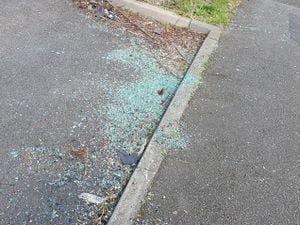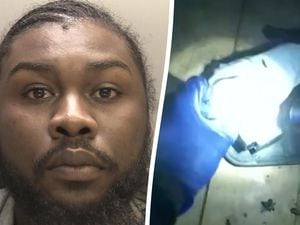Peaks, poems and protests: Special report on Edwin Drummond
In the 1970s and early 80s, Edwin Drummond was the bane of the international establishment. His protest climbs to the top of landmarks such as Nelson's Column and the Statue of Liberty resulted in several brushes with authority, as well as making headlines around the world.
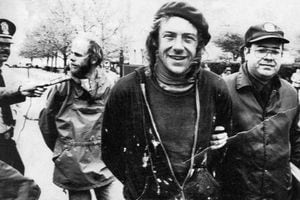
Now aged 69, the Wolverhampton-born climber, poet and anti-apartheid campaigner is a shadow of the man he once was. Suffering from Parkinson's Disease, bowel cancer and dementia, he can only walk for a few yards unaided, he needs round-the-clock medical care, and he suffers from terrifying hallucinations.
"Simple things, like having a wash and a shower become major undertakings," says Drummond, speaking from a specialist hospital in San Francisco, the city he had made his home for the past 39 years.
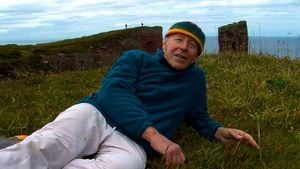
"At the moment I can manage quite a bit on my own, but it is getting harder. Cooking a meal, for example would be very difficult.
"It is so much harder because I have led such an active life, and people can't understand the things I am going through.
"I might just suddenly collapse at any time, and have these awful hallucinations. Recently I had one where I was being executed, it was really terrifying."
His sister Madeline Whittaker, who still lives in Wolverhampton, has now set up an appeal fund to raise the $10,000 - around £6,000 - to provide him with round-the-clock care.
"It is difficult to know how far $10,000 will go, but somewhere between six to 12 months," says Mrs Whittaker.
So far, the fund, on the US website give giveforward.com is just over a fifth of the way to its target.
"He only has a very small pension, there isn't the welfare in America like we have over here," says Mrs Whittaker, a 74-year-old retired schoolteacher.
Mrs Whittaker, who has a terminal lung condition herself, said his 25-year-old daughter Fiume had become his primary carer since he was first diagnosed with Parkinson's 15 years ago.
However, she said her brother's condition now needed skilled help from specialist nurses which were not provided by the state-funded Medicare system.
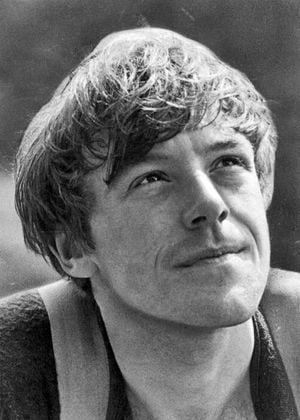
"At the moment he is receiving the care he needs, but the Medicare is just a short-term thing, it is terrible," added Mrs Whittaker who lives in Northycote Lane and has taught at Highfields School in Wolverhampton and Wolgarston High School in Penkridge.
Drummond, who recently endured six weeks of radiotherapy, says he developed his taste for climbing as a youngster, when his parents would lock him out of the family home in Hilston Avenue, Penn.
"My parents would lock me out after school, so to get to the pantry I had to climb up a ladder, traverse along a little ledge, mantelshelf onto the window ledge, then squeeze through the window," he says.
"I could be in and out in five minutes."
During a stay at a youth hostel in North Wales with his friend John Varty he first clapped eyes on the mountain Cadair Idris, and immediately felt a 'primitive attraction' to climb it.
"We set off directly up it, but the cloud came down," he says.
"My companion began to cry. But I found within me a way, not only of getting to the top, but of speaking to John so that he too was able to carry on. That was very empowering."
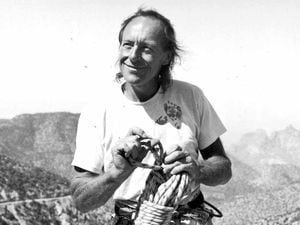
Ed, who went to Springdale School in Warstones Drive, Penn, followed by the former Wolverhampton Technical High School, in Old Hall Street, first came to the public attention in 1969 when, at the age of 24 he attempted to climb the Trolltind Wall in Norway, the tallest vertical rock face in Europe.
He and his friend, David Pearce, had to call off the their assault on the mile-high cliff face only a short distance from the top after David was injured by a falling rock. The following year, they attempted to climb Trolltind again, but again they were defeated by the snow.
However, in 1970 he earned his place in the record books by becoming the first man to climb St John's Head on the island of Hoy, a wild and remote 1000-foot sea cliff in the Orkney Islands. Together with Oliver Hill, he took seven days to climb the cliff, sleeping on ledges and in hammocks on the way. He named the climb the Long Hope Route.
In 1971 he made the world's first solo attempt to climb the North American Wall, a 3,000ft sheer granite face in California's Yosemite Valley, but was forced to admit defeat.
The dangers of the climb were underlined on his descent, when a peg came out plunging his haul bag 200ft to the ground.
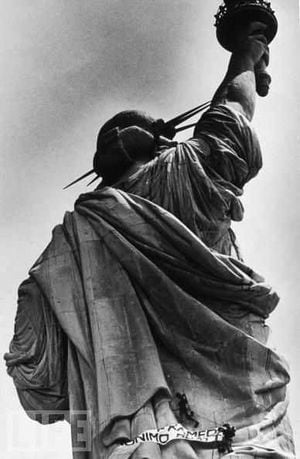
His failure to make the record books was a huge blow.
"I just think it's too hard for me," he said.
"It would be too long and too slow, and there would therefore be too many uncertainties involved. I just don't feel good about it at all."
However, his place in history was assured in 1973 when he became the first Briton to make a successful solo climb of El Capitan, a 3,564ft sheer rock face also in the Yosemite Valley. He also became the world's first solo climber to manage the feat without specialist rock-climbing pegs called pitons.
In 1975 he went to live in San Francisco, where he made a living as a poet. Around this time he became a vocal supporter of the anti-apartheid movement, and it was this cause which led to a media sensation when he returned to see his family three years later.
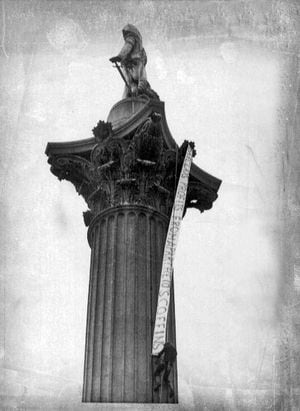
In October, 1978, he and fellow protestor Colin Rowe climbed Nelson's Column in Trafalgar Square, and unfurled a banner criticising Barclay's Bank for its commercial activities in South Africa.
"I got caught up with the spirit of the times," he said.
"It was my way of reminding people that there were others who were suffering in silence under apartheid," he said.
He and Rowe cut a dramatic figure when they appeared in Bow Street Magistrates court still in their climbing gear, having been held overnight in custody.
The pair were accused of criminal damage to a lightning conductor valued at £1,000, with the prosecution adding that steeplejacks had to be hired to remove their banner.
However, the case took a bizarre twist when the the case reached Knightsbridge Crown Court the following November when the judge asked how it cost the Department of Environment £440 every time it needed a steeplejack to climb the monument, and why it had spent £1,200 on special cranes to remove his banner. Drummond said he could climb the monument for a fifth of the steeplejack costs quoted by the Department of the Environment.
The judge threw out the case, saying that the prosecution had failed to prove there was any damage caused at all, or that if there were it had been caused by Drummond and Rowe. The defence claimed it had been caused by sloppy maintenance. Instead, the Department of the Environment found itself having to answer some difficult questions about allegations of waste when it came to maintenance costs.
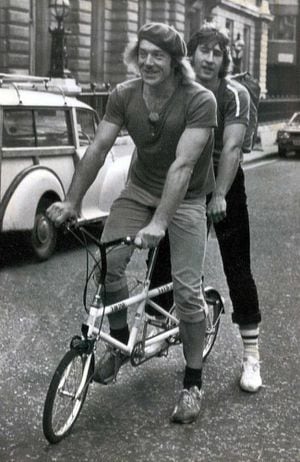
The following year, he was in trouble again after spending nine hours in a hammock 250ft up San Francisco's Grace Cathedral - this time in protest against the imprisonment of Elmer 'Geronimo' Pratt, leader of the Black Panther revolutionary group, who had been jailed in 1972 for the kidnapping and murder of schoolteacher Caroline Olsen. Pratt was freed in 1997 after his conviction was quashed, and he died in 2011. Again the case was dropped because there was no evidence of damage to the building.
However, this was nothing compared to the stir that his most spectacular stunt caused in 1980, when he and fellow protestor Steven Rutherford climbed 305ft up the Statue of Liberty, again calling for Pratt's release. The pair spent 23 hours in a hammock they suspended next to the statue's knees, before descending the following day and waiting for police to arrest them. The area was closed to tourists during the protest, when the pair unfurled a 25ft banner saying 'Liberty was framed, free Geronimo Pratt'.
In December 1981 he was in the headlines again, this time climbing a San Francisco skyscraper to make an anti-nuclear protest, timed to coincide with the first anniversary of the death of John Lennon. Joined on the climb by 21-year-old Lia Minacher, who would become his second wife - he had divorced former Wolverhampton Grammar School girl Josephine in the 1970s - he unfurled a banner with the words 'Imagine no war'. The pair carried a cine camera to film their exploits and broadcast reports of their progress to 'base camp', a van parked in the street below. It was booked for parking.
After that, Drummond largely faded from the public eye, seemingly settling down into a quiet life as a family man writing poetry and climbing for pleasure. He resurfaced in 1993 for a BBC documentary Shattered Dream, which focused on the break-up of his marriage to Lia, who was by this time finding his idealism hard to live with.
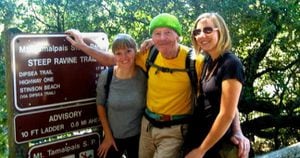
As well as Fiume, Ed also has a son Haworth, who is in his early 50s and lives in Sheffield with his 14-year-old daughter Evie, and a 22-year-old daughter, Areanne, who lives in Paris.
Now a weak and frail man, he is only too aware that his days are numbered.
But despite his clear frustrations, he is philosophical about his condition.
"I have always valued my health, but having done so much, I didn't feel aggrieved when it was diagnosed," he says.
"I was a tree. I grew, and I cast my shadow. And now it's time to wind down, and that in itself brings a whole new set of challenges and interests."
*To donate to Edwin Drummond's appeal please see the website https://www.giveforward.com/fundraiser/9zg1/ed-drummond-s-parkinson-s-disease-and-cancer-fund

